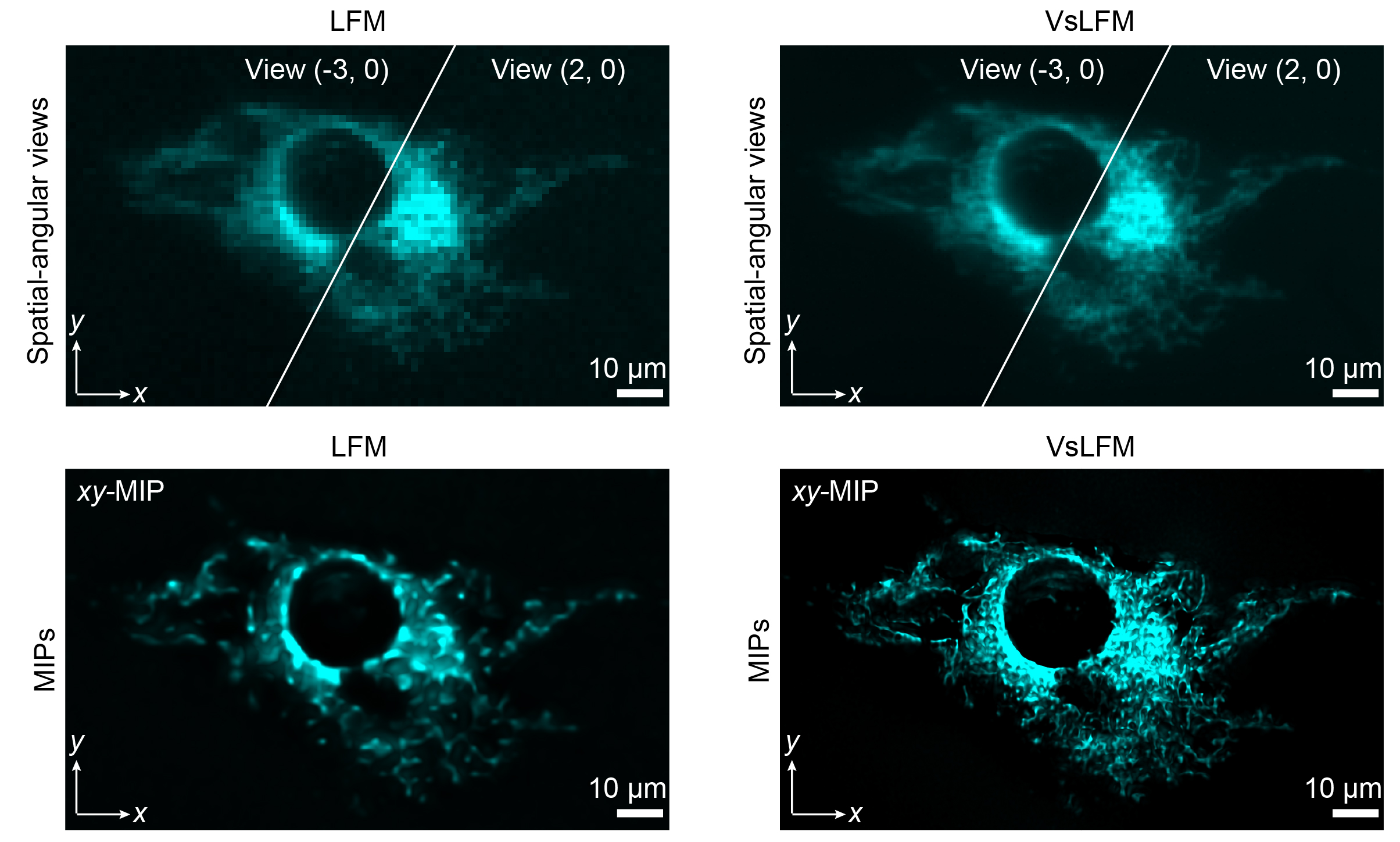VsLFM-master
Version: 2.1
Lisence: GNU General Public License v2.0
Overview
We propose a virtual-scanning strategy based on deep neural network for light-field microscopy (LFM), termed virtual-scanning LFM (VsLFM), a deep learning-based framework to promote LFM to reach the same 3D spatial resolution as scanning LFM [paper] within a snapshot. The whole program mainly consists of two modules, Vs-Net module for the straightforward and reliable mapping from low-resolution spatial-angular views acquired by LFM to high-resolution ones, 3D reconstruction module for recovering a high-resolution volume from angular views. The essential mechanism of Vs-Net is to fully exploit the inherent properties of light-field imaging, that is, correlation and disparity of multiple spatial-angular views.
As high-frequency information is mixed with the low-frequency information in each angular component up to the whole objective NA, high-resolution spatial information has the potential to be recovered by proper interaction and fusion of angular information.During network training, Vs-Net gradually gains virtual-scanning capacity, which endows VsLFM with high-resolution imaging performance highly comparable to scanning LFM, but only one unscanned light-field image is required.
More details please refer to the companion paper where this method first occurred [[paper]] (this link will be avaiable after paper publication). Next, we will guide you step by step to implement our method.
System Environment
Recommended configuration
- a). 64 GB memory or better
- b). 1 or 2 NVIDIA RTX 2080 Ti GPUs or better
Platform
There is no strict restrictions on the version of the platform. We recomand the version of platform based on the configuration of NVIDIA RTX 2080 Ti GPU:
-
a). Ubuntu 20.04
-
b). Python 3.7
-
c). Pytorch 1.5.0
-
d). CUDA 10.2 or 11.0
-
PyTorch 1.5.0, torchvision 0.6.0. The code is tested with python=3.7, cuda=11.0.
Building environment
The main required package version of this project is shown in requirements.txt.
You could pip the environment by running the following code. The install time is usually less than an minute.
pip install -r requirements.txtDemo
Training Vs-Net
- We provide a demo train set (
./Datasets), which contains about 5000 cropped LR-HR LF-image pairs of mitochondrial samples. More extensive data pairs can be found in our proposed Bio-LFSR dataset (https://doi.org/10.5281/zenodo.7233421) - Download the train sets and unzip them to
./Datasets/. Place the label HR dataset in./Datasets/train_HRand the LR dataset in./Datasets/train_LR. - To start training demo the model, run
python train.py- Checkpoint models will be saved to
./Models/your_model_name/.
Test the Vs-Net model
- We provide a demo test data (
./Data/LR/mito_LR.tif). More extensive data pairs can be found in our proposed Bio-LFSR dataset (https://doi.org/10.5281/zenodo.7233421) - Perform a inference by running
python test.py- The selected pretrained model is placed in
./Models/pretrained_models. - The SR results (
.tiffiles) will be saved in./Data/SR/.
3D Reconstruction
- Run the demo code named
main_for_reconstruction.musing MATLAB. - The raw spatial-angular views captured by LFM should be placed in the folder of
Data/LR. Here, we provide a mitochondrial labelled LF data as demo, which can be optionally enhanced by the Vs-Net described above. - The corresponding PSF file has been provided in the folder of
PSF. - The final reconstruction results can be found in
Data/Reconstruction.
Results
The maximum intensity projections of a fixed L929 cell with mitochondria labelling (TOM20-GFP) by LFM and VsLFM are exhibited below. For more results and further analysis, please refer to the companion paper where this method first occurred [[paper]](unavaiable now)
Citation
If you use this code and relevant data, please cite the corresponding paper where original methods appeared:
[[paper]] (unavaiable now)
Correspondence
Should you have any questions regarding this code and the corresponding results, please contact Zhi Lu (luz18@mails.tsinghua.edu.cn).
